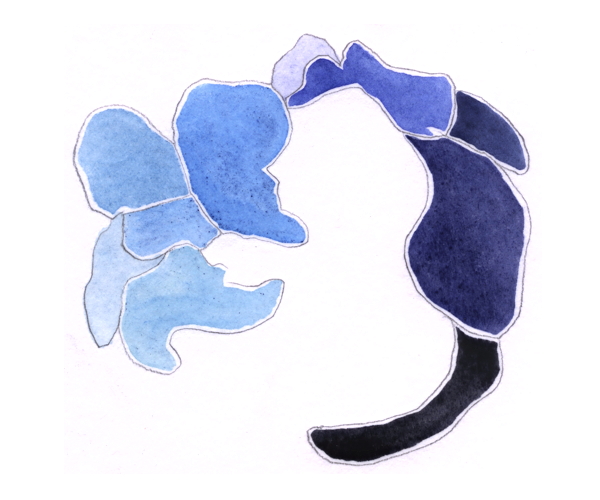
|
|
| 9.9.2014 |
The second thread to the "Hurrying" figure/ground story involves my father's side of the family. A week or two ago I thought I fully understood the story I was telling around the maze painting. I was going to continue that thread by describing meaningful figure ground reversals that have been signposts in my art practice; but during a quick research trip to google images I was startled to recognize a long forgotten image that predates "Hurrying"; so I'll tell that story first.
My father's parents lived in Shreveport. Their apartment complex had a pool where we swam. When I was 3 I remember falling in the pool fully clothed just before we were getting in the car to drive home. We visited my grandparents for events like the Louisiana state fair. We ate out at Sansones where my grandmother seldom liked the food she ordered but my grandfather was always willing to trade dishes with her. Their apartment was interesting to me. Lots of quirky personal items like bronzed baby shoes. an exercise bike, and an asian screen painting in the living room where the sofa had a plastic cover. I smelled a lingering oder of moth balls in the closets and wondered about the scotch tape over some of the light switches to prevent them from being used. Most of the walls were covered with family photographs but in the den, visible just as you entered the apartment, hung a framed reproduction of a 1902 drawing by the American illustrator Charles Allen Gilbert titled "All is Vanity" , a classic figure ground reversal. The drawing depicts a young woman sitting at a vanity, but wait, squint your eyes and you'll see a skull. So I am sure I knew this reversal effect very early in my life and had some sense of the double meaning of images. The skull alarmed me and maybe this is why I suppressed the memory. Now I know that the picture is intentionally scary, a momento mori or reminder of death. What lies unrecognized in negative spaces? |
| Previous Drawing | Home | Next Drawing |